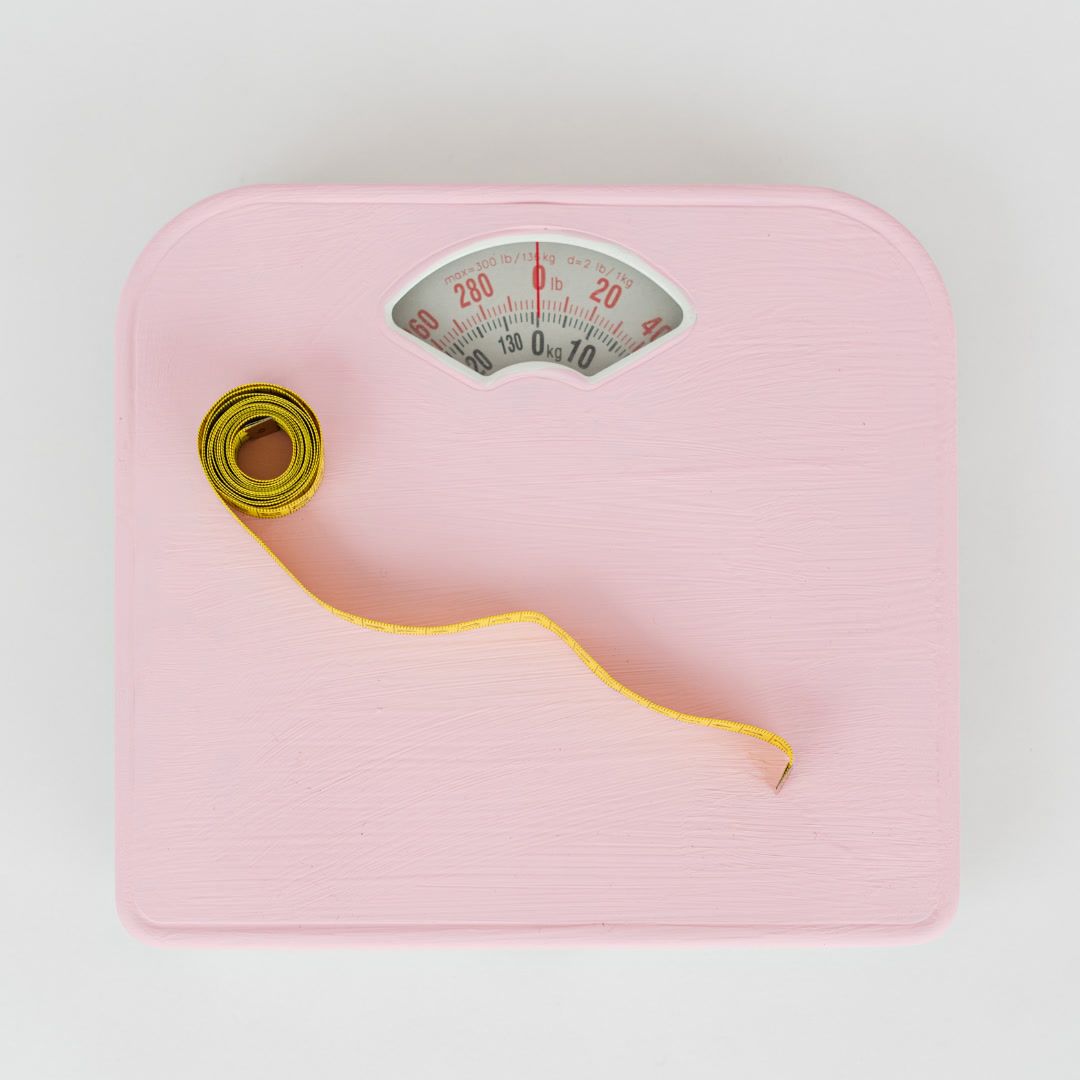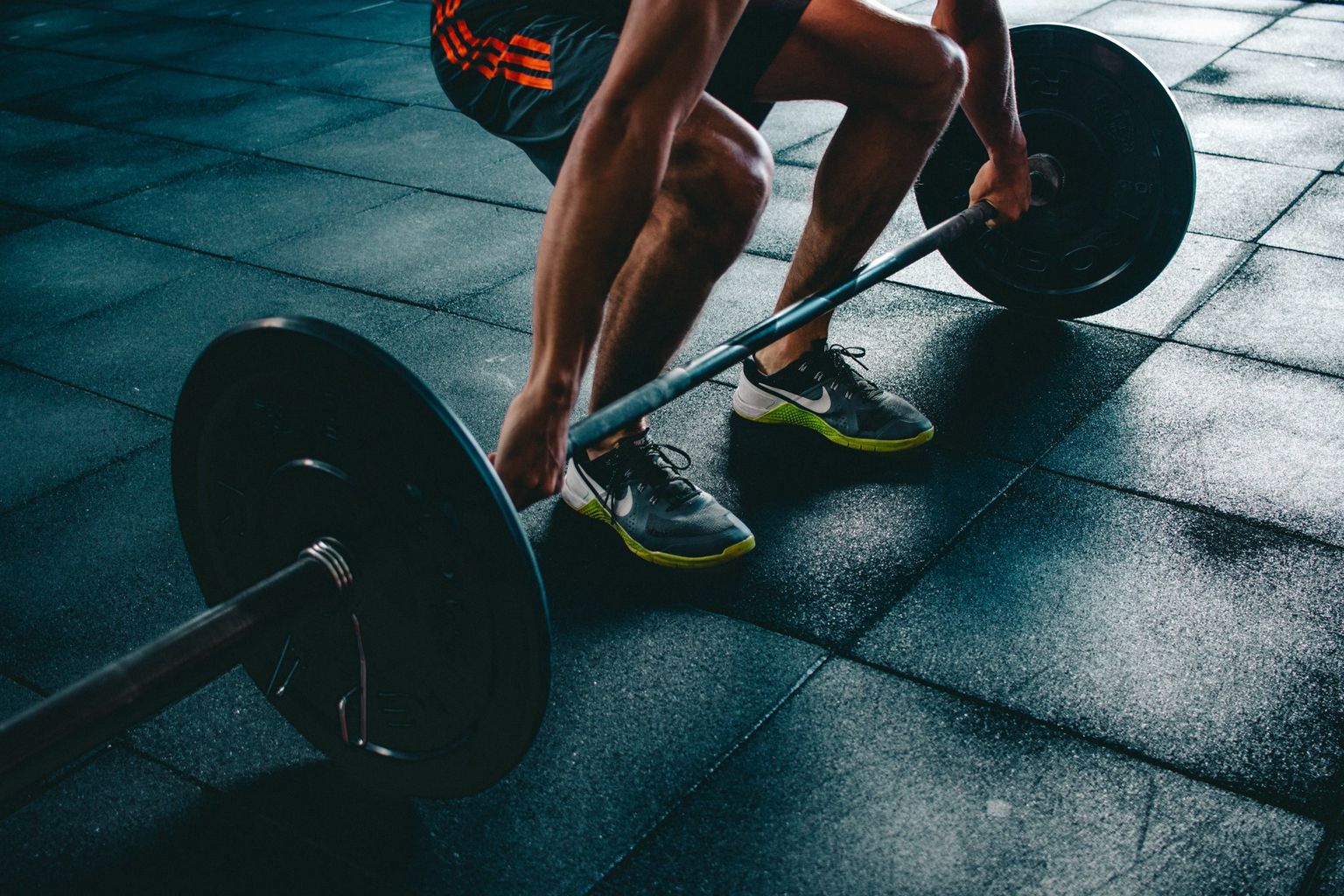Resistance Band Exercises for Beginners: Starter Guide
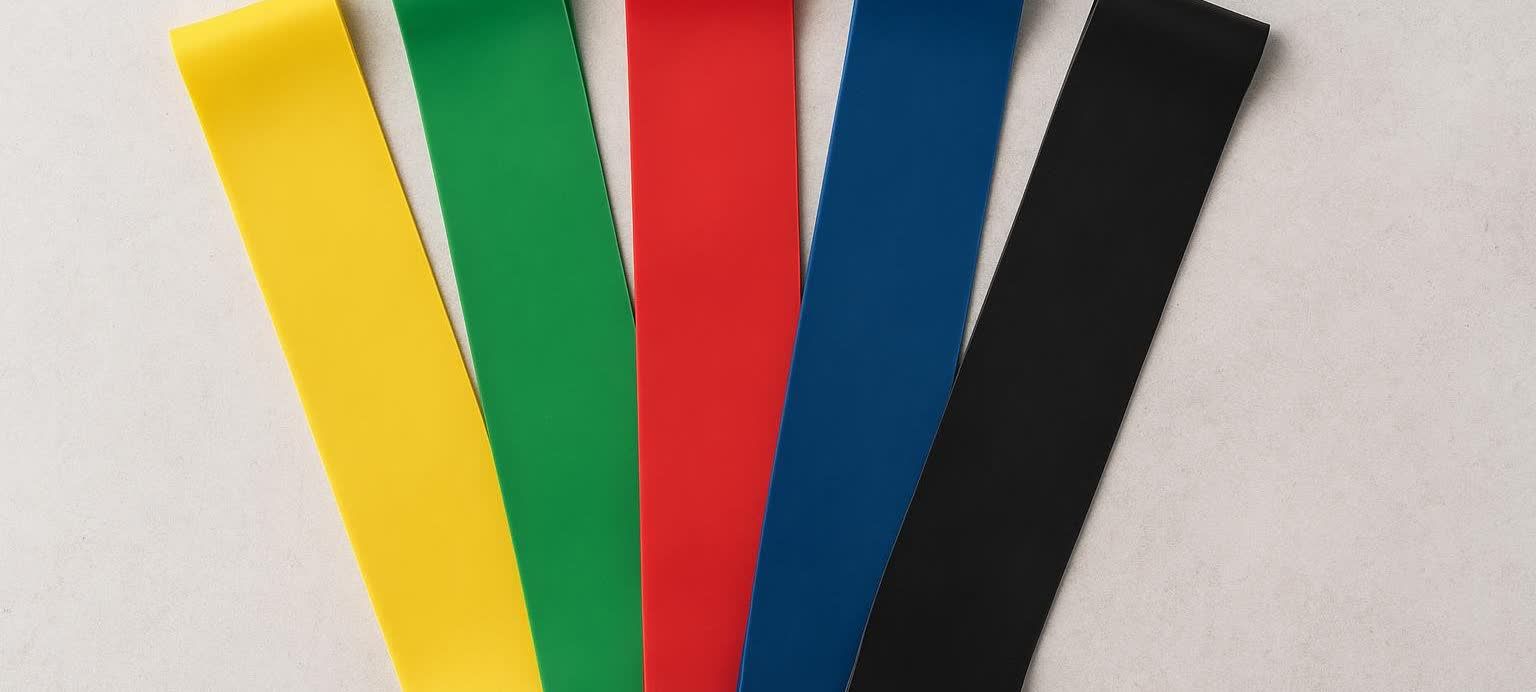
Resistance Band Exercises for Beginners: Starter Guide
Primary keyword: resistance band exercises for beginners
Resistance band exercises for beginners offer a low-cost, joint-friendly gateway into strength training. These oversized rubber bands might look simple, but research shows that elastic-band workouts can build muscle and strength on par with free weights—one review found similar improvements in bench press and squat strength compared with traditional equipment. Even better: bands are portable, stow in a desk drawer, and cost less than a single month of most gym memberships.
This step-by-step guide will walk you through everything you need to start training—no bulky equipment or prior experience required.
Table of Contents
- Why Train With Bands?
- Choosing the Right Band
- Safety, Set-Up & Warm-Up
- 12 Beginner Resistance Band Exercises
- 4-Week Beginner Workout Plan
- Progression Tips
- FAQ
- Next Steps
Why Train With Bands?
| Benefit | Why It Matters |
|---|---|
| Joint-friendly tension | Resistance rises as the band stretches, reducing joint stress at weak angles. |
| Portable & space-saving | A full set weighs < 2 lb and fits in a desk drawer—perfect for apartments, offices, or travel. |
| Body-composition boost | According to Cleveland Clinic, band workouts can rival dumbbells for fat loss. |
| Scalable for rehab or power | Switch to lighter or heavier bands to match goals—from knee rehab to explosive sprint drills. |
Choosing the Right Band
There are two main styles:
- Flat, looped “pull-up” bands (41″ loops) — versatile for full-body moves and assisted pull-ups.
- Tubing with handles — convenient for rows, presses, and curls.
Band Color & Resistance
| Color | Approx. Tension @ 100 % Stretch |
|---|---|
| Yellow | 3 lb / 1.4 kg |
| Red | 4 lb / 1.8 kg |
| Green | 5 lb / 2.3 kg |
| Blue | 7 lb / 3.2 kg |
| Black | 9 lb / 4.1 kg |
| Silver | 13 lb / 5.9 kg |
| Gold | 18 lb / 8.2 kg |
Start with yellow or red if you’re brand-new, then level up once you can complete all reps with perfect form. (TheraBand force chart)
Safety, Set-Up & Warm-Up
- Inspect bands before every workout for cracks or thinning.
- Secure anchor—use a sturdy post, closed door with anchor, or stand on the band; avoid sharp edges.
- Maintain tension so the band never goes slack.
- Wear shoes to protect bands and improve stability.
- 5-minute warm-up
• 30 jumping jacks (light cardio)
• Cat-camel × 8 (hands & knees, slowly arch and round back)
• Hip circles × 10/side (standing, draw big knee circles)
• Band pull-aparts × 15 (arms straight, pull band to chest)
For more joint-prep ideas, see our mobility drill guide.
12 Beginner Resistance Band Exercises
Perform 2–3 sets of 10–15 controlled reps—unless otherwise noted. Rest 30–45 s between sets.
Upper Body
| # | Exercise | Main Muscles | How-To & Cues | Common Mistake |
|---|---|---|---|---|
| 1 | Standing Chest Press | Chest, triceps | Anchor at chest height ➜ step forward ➜ press arms straight ➜ return until elbows just behind torso. | Rib flare |
| 2 | Seated Row | Upper back, biceps | Loop band around feet ➜ sit tall ➜ pull handles to ribs, squeeze shoulder blades ➜ extend arms. | Leaning back |
| 3 | Overhead Shoulder Press | Delts, core | Stand on band ➜ hands at shoulders ➜ press overhead, ribs down ➜ lower with control. | Low-back arch |
| 4 | Supinated Biceps Curl | Biceps | Stand on band ➜ palms forward ➜ curl to shoulders ➜ lower until elbows straight. | Using momentum |
| 5 | Band Pull-Apart | Rear delts, mid-traps | Arms straight at shoulder height ➜ pull band to chest ➜ return under tension. | Bending elbows |
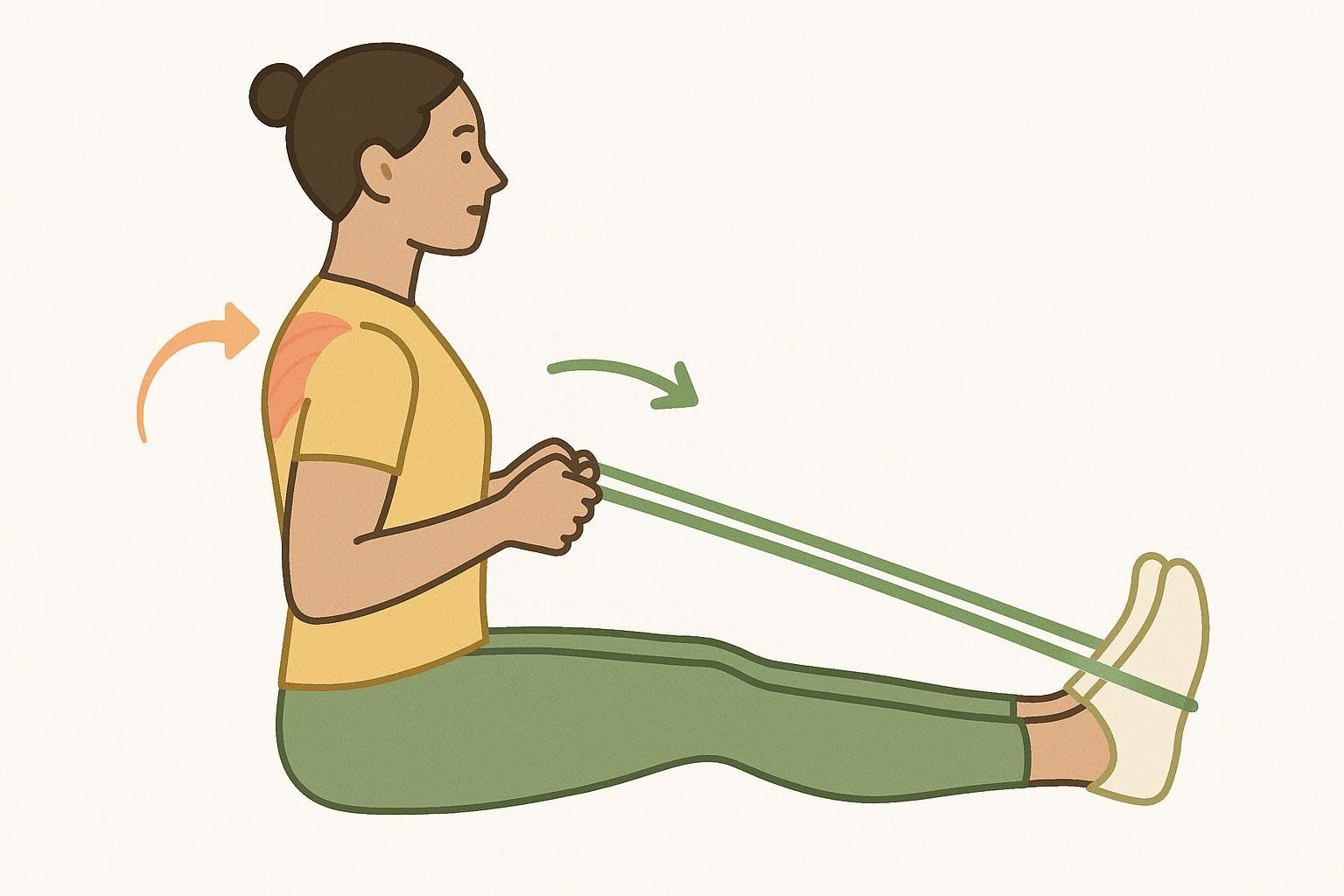
Lower Body & Core
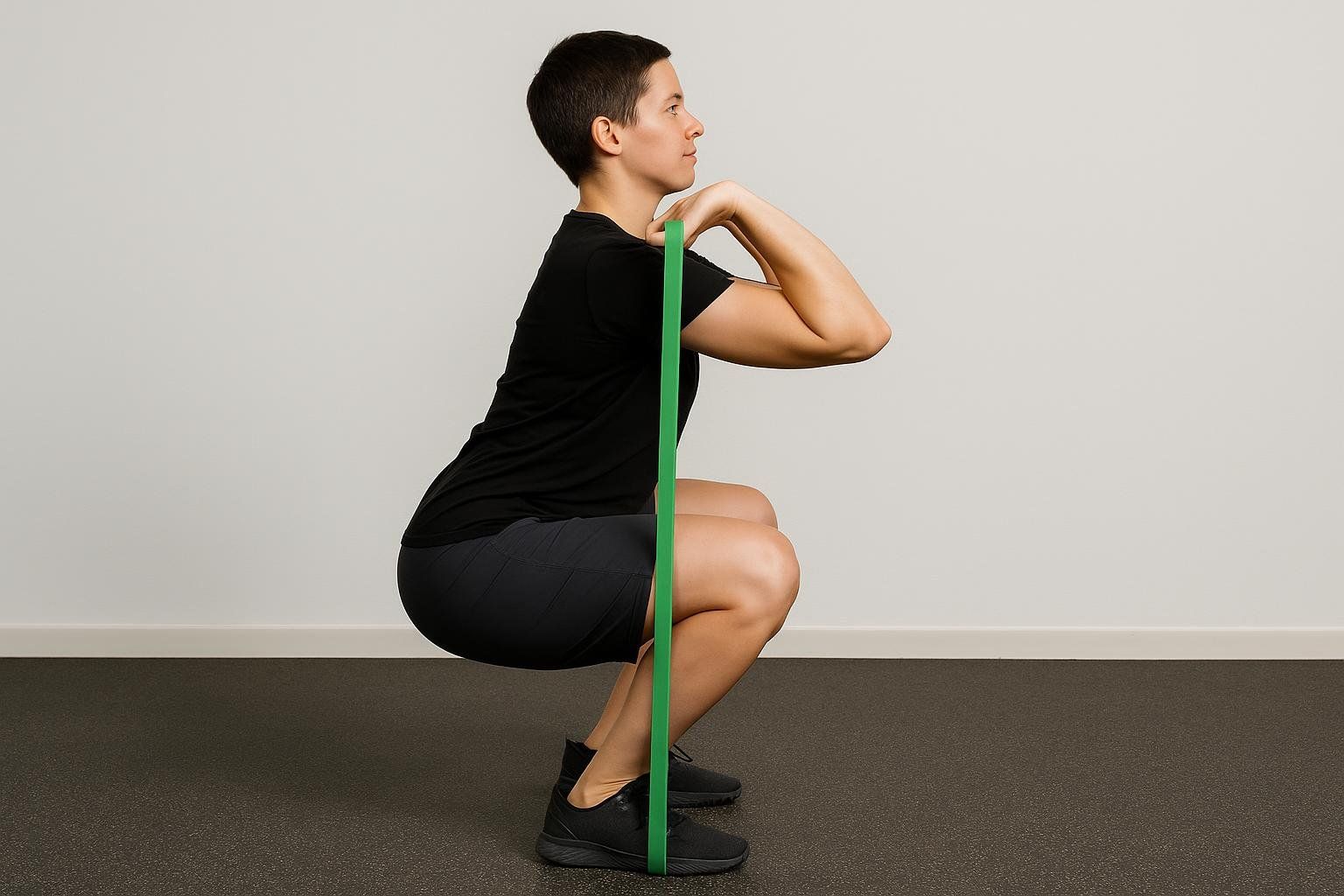
| # | Exercise | Main Muscles | How-To & Cues | Common Mistake |
|---|---|---|---|---|
| 6 | Banded Front-Rack Squat | Quads, glutes | Stand on loop band ➜ raise each side to shoulders (vertical straps) ➜ squat to thigh-parallel ➜ drive through heels. | Heels lift |
| 7 | Lateral Band Walk | Glute medius | Mini-band above knees ➜ soft knees ➜ side-step 10–12 each way, hips level. | Dragging feet |
| 8 | Banded Romanian Deadlift | Hams, glutes | Stand on band ➜ hinge hips back, spine neutral ➜ squeeze glutes to stand. | Rounded back |
| 9 | Banded Glute Bridge | Glutes, hips | Mini-band above knees ➜ lie face-up ➜ lift hips, push knees out ➜ lower slowly. | Knees cave |
| 10 | Standing Pallof Press* | Core | Anchor at chest height ➜ stand sideways ➜ press arms forward, hold 10–15 s ➜ return, switch. | Torso rotation |
| 11 | Banded Dead Bug | Deep core | Band around feet ➜ arms up ➜ extend opposite arm & leg, back flat ➜ switch sides. | Back lifts |
| 12 | Assisted Reverse Lunge | Quads, glutes | Anchor band high behind ➜ hold handles ➜ step back into lunge ➜ drive through front heel; alternate. | Knee collapse |
*Pallof Press: 3 sets of 10–15-second holds per side
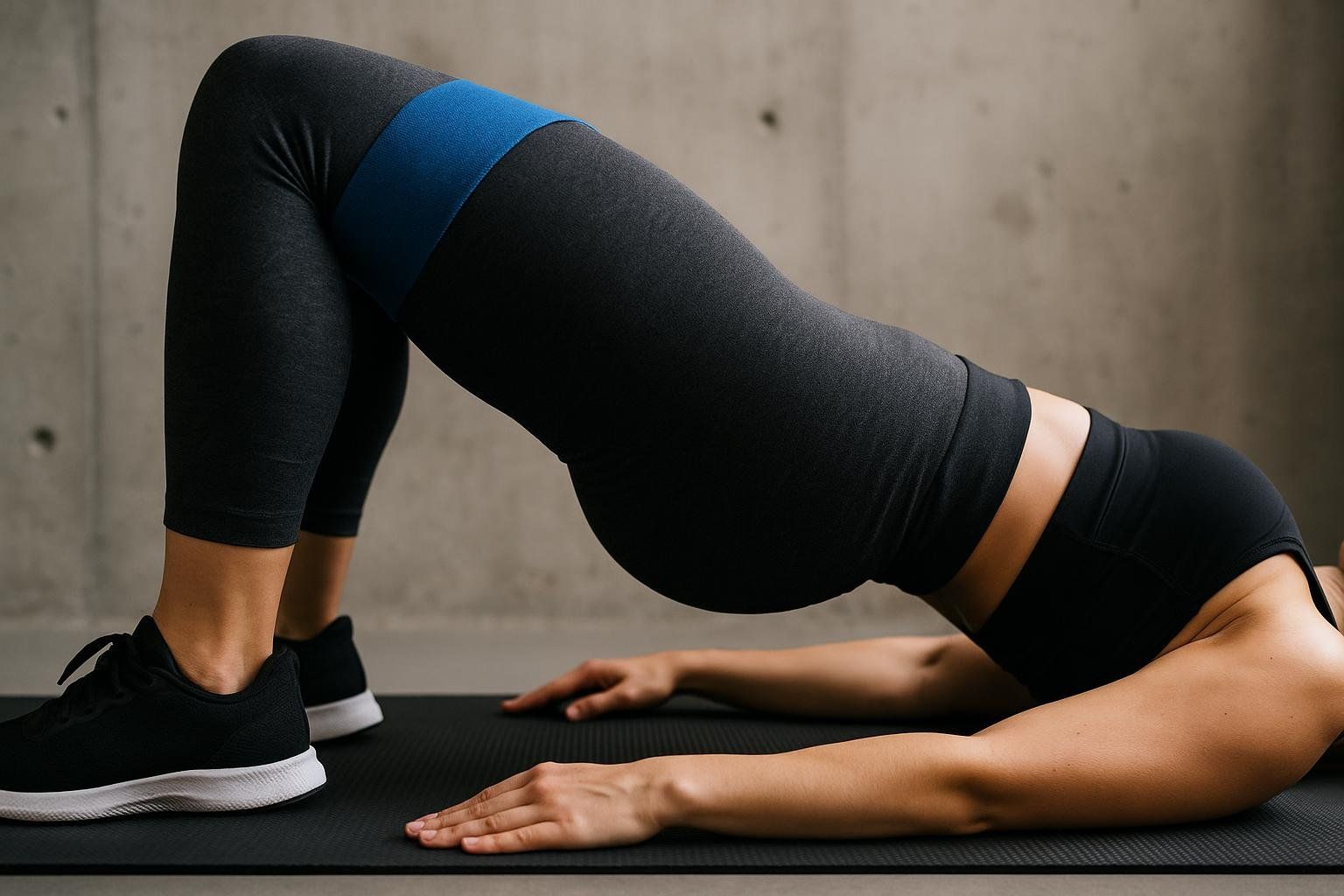
4-Week Beginner Workout Plan
Perform Workout A and Workout B on non-consecutive days (e.g., Mon/Wed/Fri).
| Week | Workout A | Workout B |
|---|---|---|
| 1 | Standing Chest Press; Banded Front-Rack Squat; Seated Row; Pallof Press (3 sets) | Overhead Shoulder Press; Banded Romanian Deadlift; Supinated Biceps Curl; Lateral Band Walk (3 sets) |
| 2 | Same four moves as Week 1 but 4 sets each | Same four moves as Week 1 but 4 sets each |
| 3 | Assisted Reverse Lunge; Seated Row; Standing Chest Press; Pallof Press; Banded Dead Bug (3 sets) | Overhead Shoulder Press; Banded Glute Bridge; Supinated Biceps Curl; Lateral Band Walk; Band Pull-Apart (3 sets) |
| 4 | Same as Week 3 but use a stronger band on first exercise | Same as Week 3 but use a stronger band on first exercise |
Cool-down with 3–5 minutes of full-body stretching after each session.
Progression Tips
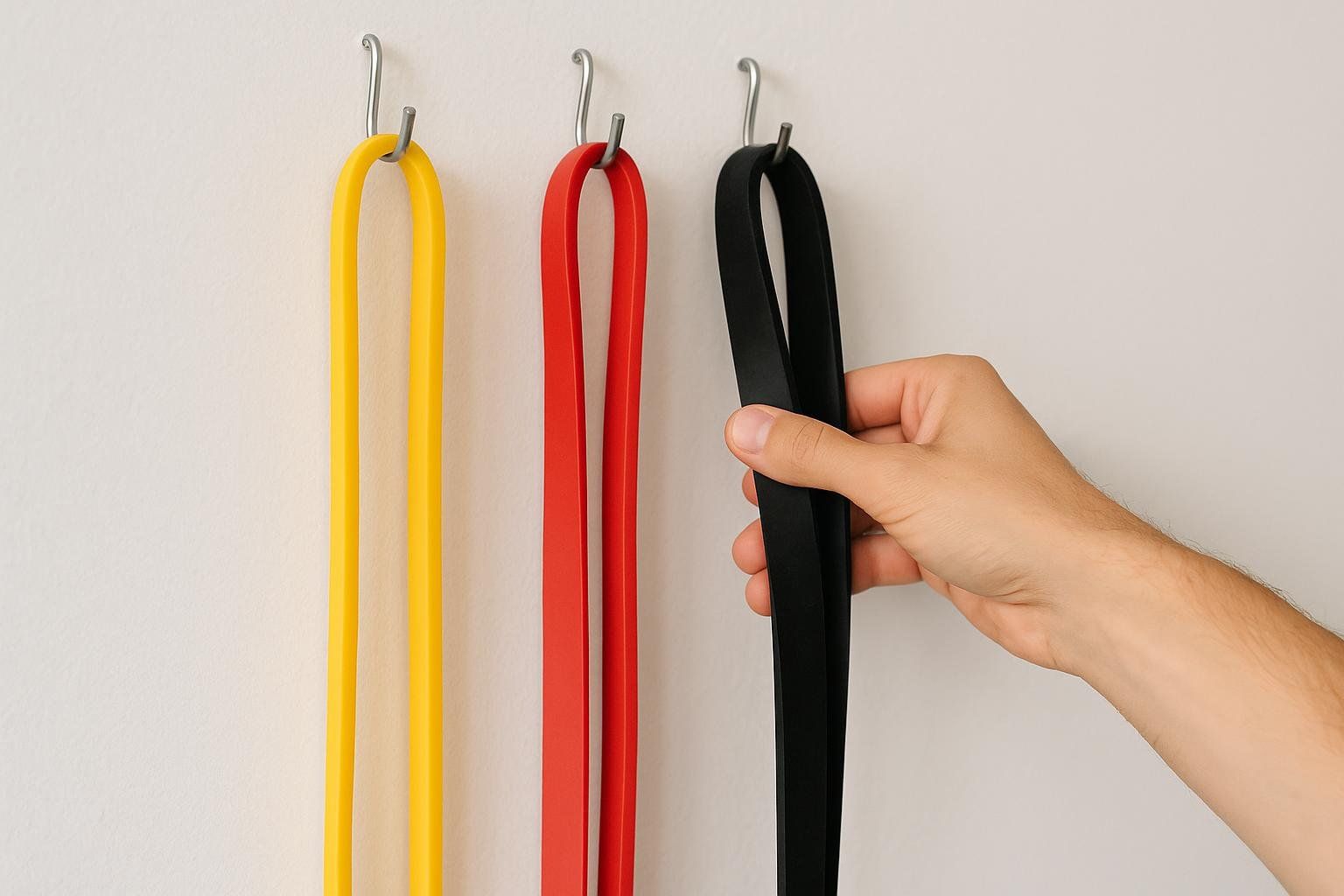
- Move to a thicker band once you hit 3 × 15 reps with solid form.
- Slow the lowering phase to 3 seconds for extra muscle stimulus.
- Add instability—try half-kneeling presses or rows.
- Superset push-ups with band rows for balanced shoulders.
Track progress every four weeks. For data-driven feedback, a BodySpec DEXA scan quantifies muscle gained and fat lost.
FAQ
Are resistance bands enough to build muscle long-term?
Yes—most beginners can progress for months using thicker bands or slower tempos. You may eventually add other tools, but bands lay a strong foundation.
How many days per week should I train?
Two or three full-body sessions give muscles time to recover and grow.
Do bands replace dumbbells?
They complement them. Bands provide constant tension and unique angles free weights can’t.
Can I use bands during rehab?
Often yes—physical therapists frequently prescribe elastic resistance. Check with your clinician.
Why do bands feel hardest at the top of the rep?
Elastic tension increases as the band stretches, matching your natural strength curve.
How do I travel with bands without tangling?

Coil each band, secure with a hair tie, and pack in a mesh bag so TSA can view contents.
Next Steps
Ready to turn band workouts into body-composition wins? Book a quick, affordable BodySpec DEXA scan to measure lean mass and visceral fat before your 4-week plan—then compare results after. Data beats guesswork every time.

